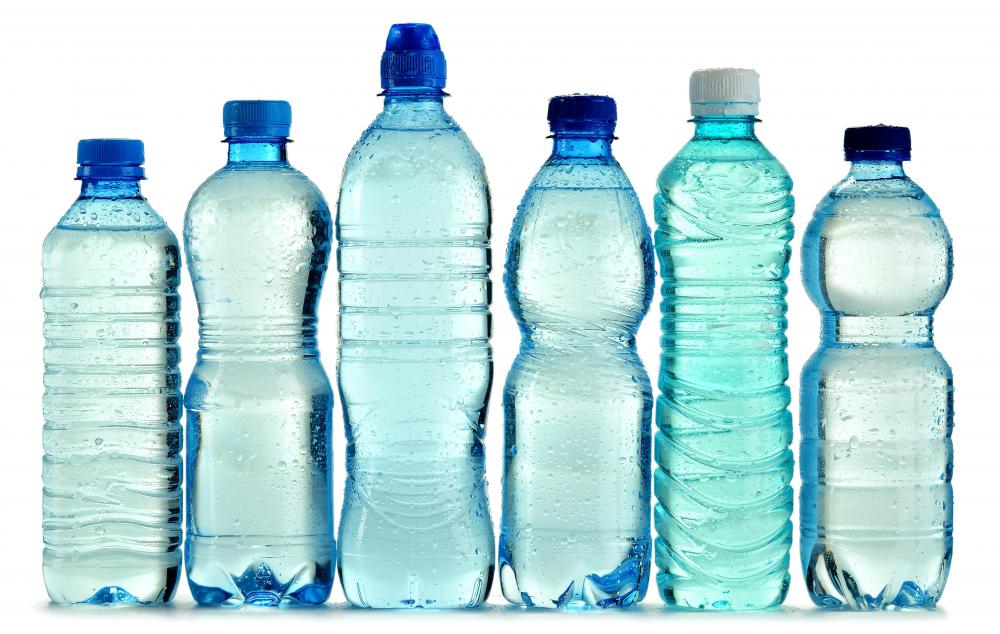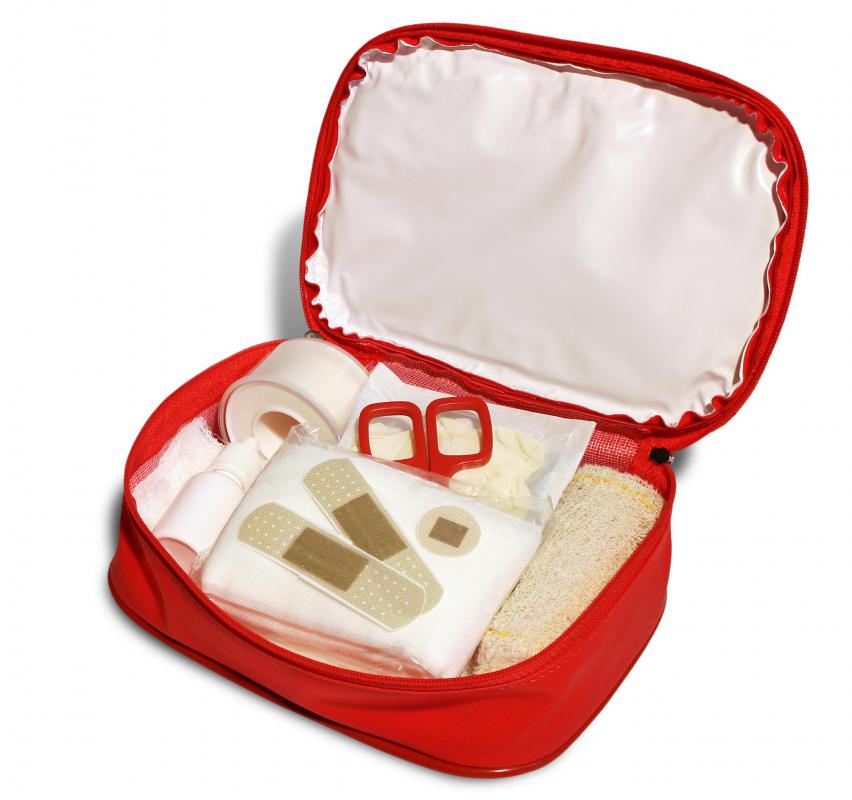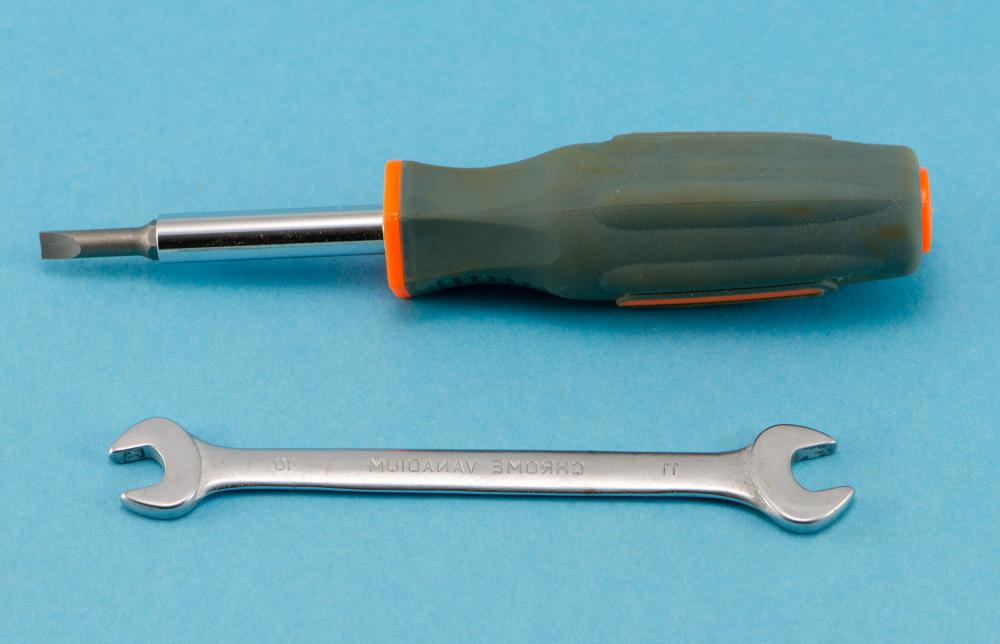At HomeQuestionsAnswered, we're committed to delivering accurate, trustworthy information. Our expert-authored content is rigorously fact-checked and sourced from credible authorities. Discover how we uphold the highest standards in providing you with reliable knowledge.
What Should be in an Earthquake Kit?
When the earth rumbles and quakes, leaving buildings, homes, and belongings in a pile of rubble, having an earthquake kit on hand is key to survival. Recovery from any catastrophe requires essential human needs be met, and in some cases, being earthquake ready can mean the difference between life and death. As a general rule of thumb, kits should include supplies to maintain a family of four for at least three days. These supplies include:
Water: This is absolutely vital. Water should be stored in plastic containers and each person should have a minimum of one gallon per day. Don't forget about pets too!

Food: Non-perishable items that don't require cooking are best. Nuts, dried fruits, canned goods, packaged snack foods such as crackers or granola bars, and peanut butter will all work, and be sure to include a can opener, plastic utensils, paper plates, and bowls. If required, add formula and infant food, and again, if you are a pet owner, be sure to include enough pet food to sustain your animals for several days.

First Aid Kit: No earthquake kit should be without first aid. This should include bandages, non-prescription drugs such as pain relievers, syrup of ipecac, digestive aids, antiseptic, antibiotic ointment, burn ointment, eye wash solution, thermometers, scissors, tweezers, and latex gloves. Extras of prescription medications are also a must have.

Documents: Make photocopies of identification, social security cards, credit cards, health records, immunization records, insurance cards, insurance policies, contracts, deeds, wills, stocks and bonds, important phone numbers, passports, and account numbers. This is a simple task that will save a lot of headaches.
Tools and Supplies: Be sure to have a flashlight, batteries, utility knife, hammer, screwdriver, wrench, matches, tape, warm clothing, work gloves, signal flare, needle and thread, bleach, disinfectant, sleeping bags, plastic garbage bags, and a crowbar.
Personal Hygiene: An earthquake kit should also include personal hygiene items such as soap, toilet paper, toothbrushes, toothpaste, feminine hygiene products, wash rag, and hand sanitizer.
Money: Emergency cash and change might be needed if banks are closed.
Local Map: Mark key locations such as hospitals and police departments.
Radio: A battery-operated radio will provide vital news and information.

An earthquake kit should be stored in an airtight container and placed in an easily accessed area. Ensure all members of the household are familiar with the appropriate procedures to follow in the event of an earthquake and that they know the location of the kit.
AS FEATURED ON:
AS FEATURED ON:































Discussion Comments
We are used to earthquakes where we live. I have taught my kids to keep a pair of shoes by their bed in case we need to run out of the house immediately due to an earthquake.
I have also included some instructions in our disaster survival kit. I wrote down instructions on how how to turn off the gas, water and electricity in case I'm not there to do it. I've also included other important information like financial information, numbers and addresses of authorities and relatives. My kids are young and won't remember everything I tell them.
I know most people don't want to consider the worst case scenario but we have to be prepared for the worst. Natural disasters can be so devastating and there is no way to predict the difficulties we might face when it happens. Being proactive about it is the best way to protect ourselves I think.
I would also recommend keeping some camping materials by your earthquake survival kit, like a tent, sleeping bags, raincoats, etc. It's very common for people to sleep outside because aftershocks can happen. Building that were just damaged in an initial earthquake can crumble during aftershocks. We hear about it all the time in the news. It's good to have some things to protect yourself from the weather if you are forced to sleep out in the open.
Post your comments